One of the most significant dates for Iditarod mushers that really rams home that the race is just around the corner, is the deadline for delivering drop bags. Those supply bags were due this week.
So much goes into packing drop bags and it can take weeks to prepare, fitting tasks in with all the other things that need doing before the race. This year the bags were due on February 15th and Aliy, with help from the SPK Village, took 1,400 pounds of gear to a Fairbanks transportation hub for their transport to Anchorage. From there her supplies will fly out to the checkpoints via the Iditarod Airforce.
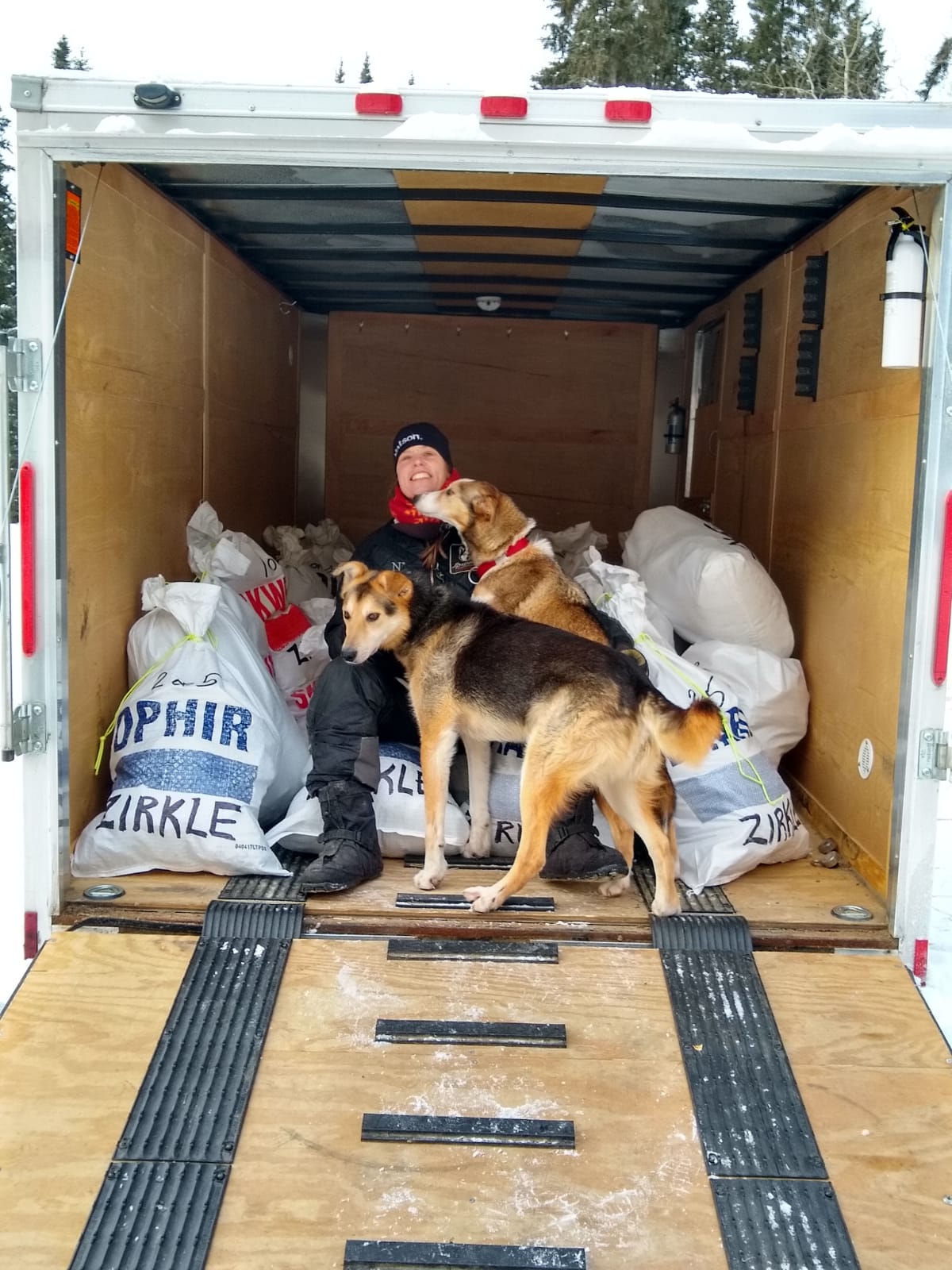
Mismo and Violet help pack the trailer
Dog food and equipment, human food and equipment and other sundry supplies are strategically placed out on the trail to resupply throughout the race.
Unsurprisingly, dog food makes up most of the weight. Hundreds of pounds of three different types of kibble is bagged in meal sized portions. Three types of kibble as one is for soaking to ensure the dogs get hydration, one to add some crunch and extra fat and protein and a third just in case someone doesn’t want to eat what’s on offer so a third, different, kibble can be used as a temptation. The other huge job is cutting frozen blocks of meat into “Snickers” snack-sized pieces to feed as snacks on the trail or to add fat and nutrition to meals. The snacks include beef, poultry skins, salmon and other interesting mixes such as BLT (beef, liver and tripe). In addition to that is extra fat crumbles and other supplements to round out each meal.
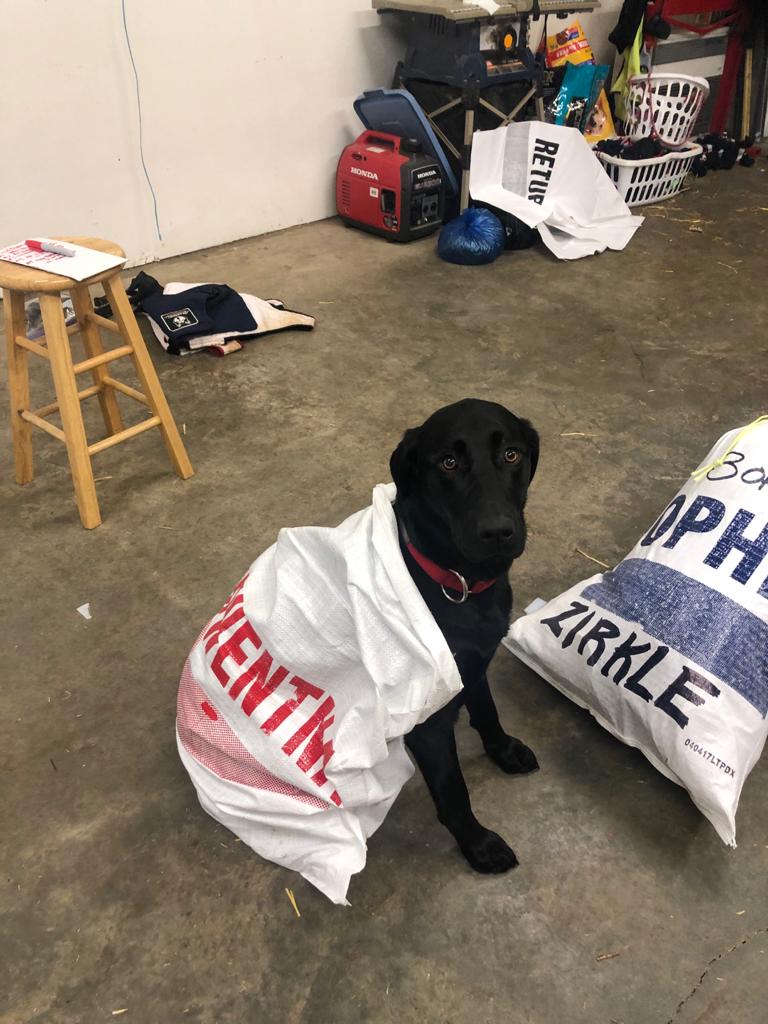
Ziptie thinks all the food sounds delicious so she would like to go to Skwentna… please.
Dog clothing and equipment is also a major consideration with several hundred booties sorted into bags with 14 sets of four. Leggings, T-shirts and spare harnesses are sent out and Aliy packs or carries three different types of dog jackets – puffy insulated coats to run in, fleece jackets to sleep in and windbreakers to, as the name suggests, shield from the wind. Also packed are fleece blankets for sleeping at checkpoints and campsites.
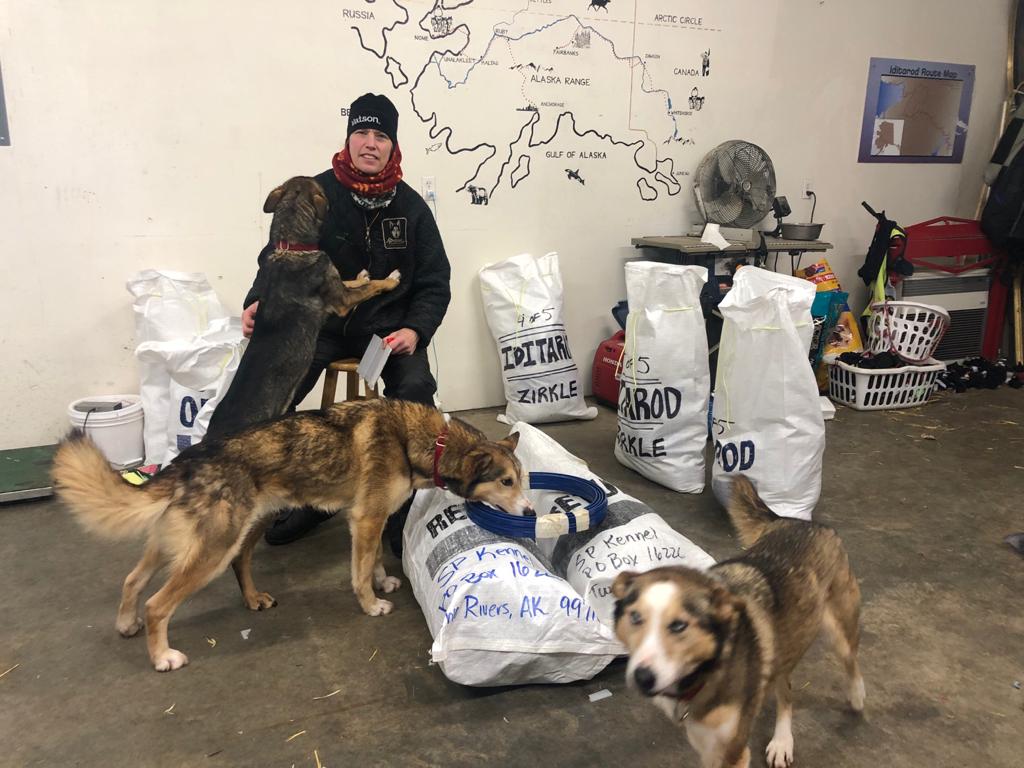
Veterinary supplies are sent to each checkpoint as well as being carried in the sled. Warming liniments, foot ointment, precautionary wrist wraps and necessary medications are included.
Sled equipment such as sled runner plastics, tools and spare essentials can be sent out, although Aliy tends to carry tools and essentials with her – just in case.
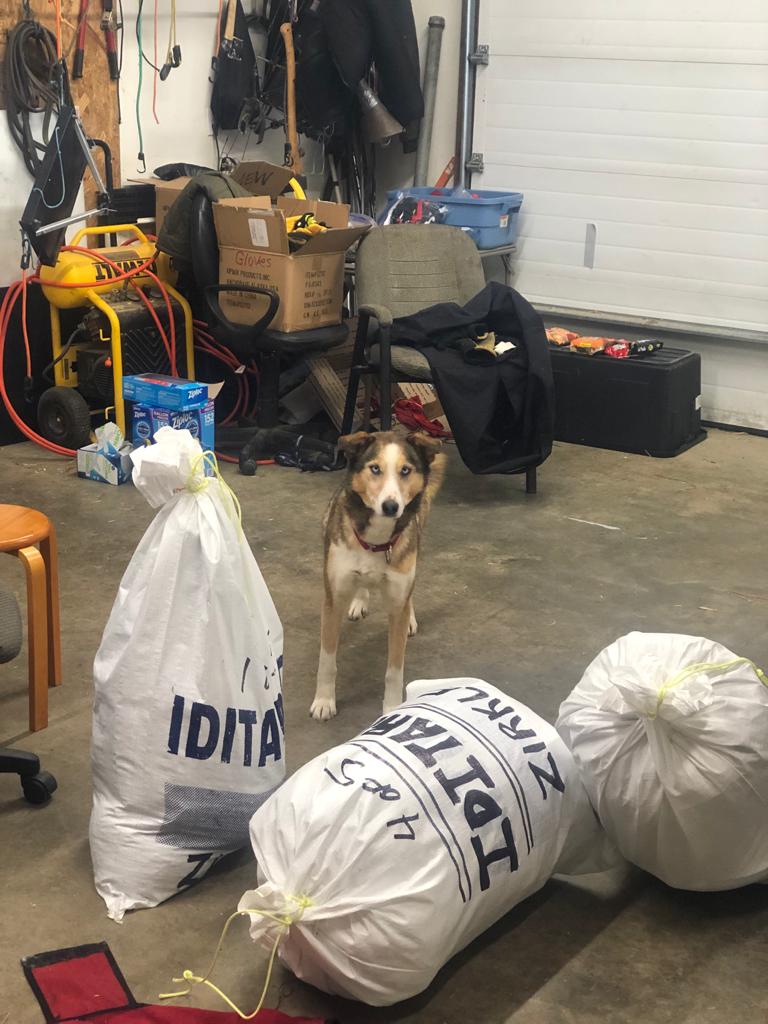
Violet oversees the tying-up process
Of course human supplies are important also. Nutritious and sustaining meals and snacks are critical for humans as well as the dogs. Aliy will have a mixture of frozen seam-sealed meals and freeze dried options and plenty of Claire & Wayne’s power bars and other treats and snacks. Replacement clothing particularly socks, gloves, hats and neck gaitors will go to every checkpoint. Aliy will also send spare boots, jackets, dry underlayers and rain gear (just in case – eek). Packs of hand and foot chemical heat warmers are sent ahead to replenish what she uses on the trail. All in all it is 1,400 pounds of a Dog Musher’s Dream Christmas List!
The 2021 race route is not traditional. It will, however, follow a predominately “normal route” from the Starting Line in Deshka Landing (Willow) all the way to the Iditarod Checkpoint. A Musher may choose to take their 24 hour layover at any Checkpoint before and including Iditarod. Then the plan is to continue the route to the old mining town of Flat. There will be a “turn-around” at Flat and then teams will return to the Iditarod Checkpoint. YES. There will be plenty of head on passing during the race. That shouldn’t be an issue. Dog teams really do get along out on the Iditarod and honestly, passing teams will be exciting. From the Iditarod Return Checkpoint, the teams will follow their paw prints back through the previous Checkpoints all the way to the original Starting Line, now the Finish Line in Deshka Landing (Willow).
The only villages open to Iditarod Mushers are Nikolai and McGrath. The Checkpoint in Nikolai will be located on a gravel bar outside of town and Mushers must stay away from all village buildings. The McGrath Checkpoint will have an indoor shelter area for Mushers – but Mushers are only allowed indoors with masks after they undergo a rapid Covid test and produce negative results.
Most Checkpoints will have Arctic Oven Tents for Musher accommodations. There are also cabins along the route that are public and free to use and those will not be regulated by the race. Mushers have been told that all of the Lodges along the route: Skwentna Roadhouse, Finger Lake Lodge, Rainy Pass Lodge are not open to Mushers. All of this means that Mushers need to be well prepared to take care of themselves and their dogs with out the typical open door policy that Alaska Villages and Lodges usually provide. Of course, this is completely understandable during a pandemic.
FOOD DROPS DONE. 

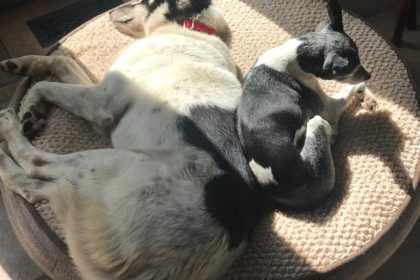



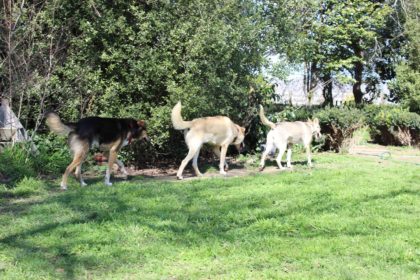
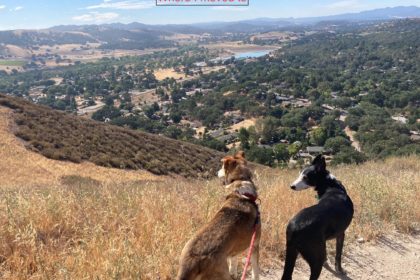
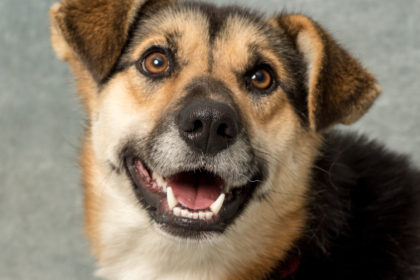
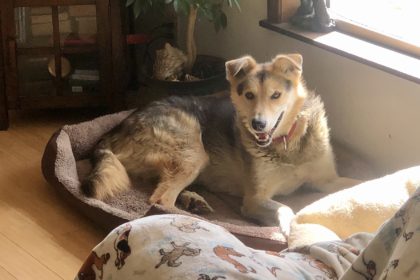
Best of luck!!! Cheering for you from Ohio!!!
That is a big task off the list….funny how this last Iditarod of yours is going to be so different from all the rest…should be interesting and exciting!!
Each year I am amazed at seeing what Mushers do to prepare for the food and care of the dogs and themselves for this long race. Kudos to all involved in this extra-large task. Interesting race route, but definitely necessary changes in the current circumstances we live in at the moment. Good job Mismo and Violet!
Love the post and it is quite a task to remember everything. Boots for sure, huh Allen! Sweet Violet watching as well as Mismo! Ziptie is so cute and well behaved! Will be cheering you on from cold Texas! Go Girl!
I enjoyed the detail in this post – Brings the planning for this event into sharp focus.
It looks like you are well packed for your trip. Thanks for all the helping hands!
I’ve been wondering about the passing on the return, not something one usually deals with on the Iditarod trail. I’ve wondered if oncoming lagging teams will be required to pull over, or if there is expected to be enough room for two way traffic. I can’t imagine enough space in technical areas like the Dalzell Gorge. Hopefully the red lantern contenders make it at least to Rohn before they hit two way traffic. It should be exciting for you to see teams you might not normally see during a race. Coming into and leaving Iditarod, mushers should get a clear idea of where their competition is. There certainly are some different angles to this year’s race. Good thing you enjoy camping with your teammates. <3
Looks like you packed plenty for that checkpoint Violet.
Iditarod 2021 will be interesting! I’ve never seen teams go in reverse on this trail!! Cheering you on Aliy all the way. Go SPK Red team!!!